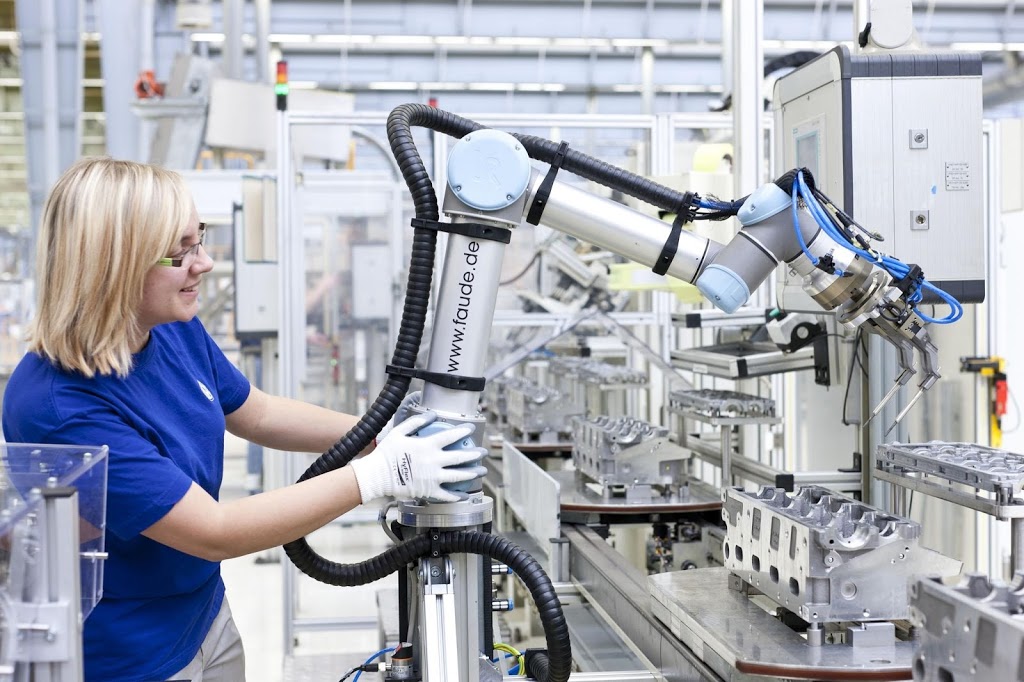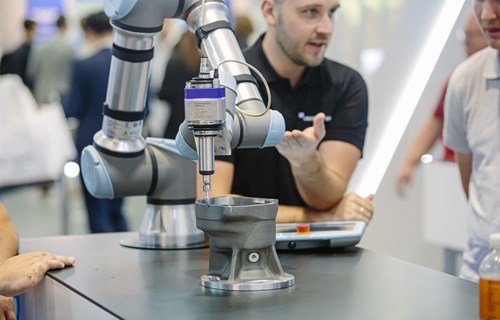
The manufacturing landscape is undergoing a profound transformation with the integration of Collaborative Robots, also known as cobots. These cutting-edge machines are not merely tools but companions in daily work operations, ushering in a new era of human-robot collaboration. This article takes an in-depth look at the myriad applications of cobots in manufacturing, exploring their historical evolution, key features, advantages, challenges, and the promise they hold for the future.
Historical Context
The story of cobots begins against the backdrop of the industrial revolution that saw the advent of industrial robots. These robots, while groundbreaking, were characterised by rigidity and enclosed structures, limiting their adaptability and posing safety concerns.
Enter cobots, a response to the limitations of their predecessors. Emerging as a necessity for more adaptable and collaborative machines, cobots represent a paradigm shift in the manufacturing landscape. Their development was driven by a desire for flexible automation that could work alongside human counterparts.
Key Features of Cobots
A hallmark of cobots is their advanced safety features. Fitted with force and torque sensors, they possess an innate ability to detect the presence of humans, automatically adjusting their movements. This eliminates the need for safety cages, fostering a safer and more collaborative work environment.
Unlike traditional robots with predetermined tasks, cobots excel in adaptability. Their reprogrammable nature allows for quick and seamless transitions between tasks. This flexibility is a game-changer, enabling manufacturers to respond swiftly to changing production needs.
Applications of Cobots in Manufacturing
In assembly lines, cobots are making waves by collaborating seamlessly with human workers. Their precision and adaptability prove invaluable in intricate assembly processes, enhancing overall efficiency. Moreover, cobots excel in product disassembly, contributing to efficient recycling practices.
Warehouse automation is undergoing a profound transformation, thanks to cobots. These machines efficiently load and unload materials, optimising logistics processes and reducing the burden on manual labour. The result is a more streamlined and cost-effective supply chain.
Cobots play a pivotal role in quality control processes through the integration of vision systems. Their precision in defect detection ensures that products meet stringent quality standards, reducing errors and minimising waste. The result is enhanced product quality and customer satisfaction.
In the realm of manufacturing, collaborative welding processes are becoming a reality with the introduction of cobots. Their ability to work alongside human welders ensures a harmonious and efficient workflow, leading to improved accuracy and productivity in welding and cutting tasks.
Advantages of Implementing Cobots
One of the most significant advantages of integrating cobots is the boost in efficiency. Their contribution to faster production cycles translates to reduced lead times and enhanced overall operational efficiency. With reduced downtime, manufacturers can achieve higher output without compromising quality.
Compared to traditional robots, cobots offer a more cost-effective solution. The lower initial investment, combined with reduced training and integration costs, makes them an attractive option for businesses seeking to embrace automation without breaking the bank.
Cobots play a pivotal role in enhancing workplace safety. By collaborating directly with humans without the need for safety cages, they mitigate the risk of accidents. This not only ensures a secure working environment but also fosters a positive and conducive atmosphere for human-robot collaboration.
Challenges and Considerations
While the benefits of cobots are evident, integrating them with existing manufacturing systems presents challenges. Compatibility issues may arise, necessitating thoughtful strategies for seamless integration. Manufacturers must carefully plan the integration process to minimise disruptions and potentially maximise efficiency gains.
As cobots become integral to manufacturing processes, the need for skilled workers proficient in collaborating with these machines becomes apparent. Comprehensive training programs are essential to equip the workforce with the necessary skills for effective collaboration. Upskilling initiatives will play a crucial role in ensuring a smooth transition to a collaborative manufacturing environment.
Future Trends
The future of cobots holds promises of even more advanced technological features. Incorporating artificial intelligence and enhancing sensory capabilities will further augment their capabilities. This opens new possibilities for automation, allowing cobots to take on increasingly complex tasks with greater autonomy.
Predictions for the future indicate exponential growth in the adoption of cobots across diverse industries. As these machines evolve, new applications and industries are likely to embrace the collaborative revolution. The growing awareness of the benefits of cobots in manufacturing is expected to drive widespread adoption, contributing to a more automated and efficient manufacturing landscape.
Conclusion
In conclusion, the applications of cobots in manufacturing are not just transforming industries; they are shaping the future of work. From assembly lines to quality control, cobots are redefining efficiency, safety, and innovation. As we navigate through the challenges and witness the evolution of technology, it becomes increasingly clear that the era of human-robot collaboration is only just beginning. The potential for enhanced productivity, reduced costs, and improved workplace safety paints a promising picture for the manufacturing landscape, where the synergy between humans and cobots is the key to unlocking unprecedented possibilities.




